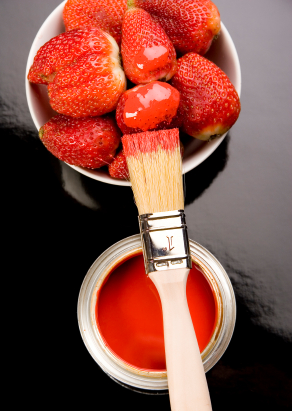We have already discussed how to create good-looking product images on the Onsight blog before. There are, however, additional tips that you might want to take into consideration in terms of what your images need to portray to entice the buyer and make the sale easier.
Show what your product can do
On the Onsight mobile sales app, you have the option to add a main image for your product. This is usually a front-facing view on a plain background. Then you can add extra images onto that main image where you have the freedom to play around a bit. One of the ways you can add value to the buyer’s experience is by showing them images of what the product can do. How is it used in a real-life experience? What does it look like when being used? If it is a complicated product, show how it is put together. Have a step-by-step collage as one of your images. A walkthrough of the product may convince the buyer that it is easy-to-use, saves time or avoids the need to train sales reps or employees on its usage.
Highlight innovative features
If your product has a unique feature that other products in a similar market does not have, showcase it. It is a good selling point so why not make use of it? If it has a technological advancement that ups the value of the product, have a diagram of the science behind it. Obviously, keep it simple so as not to frighten the buyer or make it seem like something that is more effort than it is worth. Simply show that it is a step beyond what is already out there. Does it have a revolutionary new technique involved or a system that has never been used before?
Don’t be misleading
Sometimes what is obvious to the seller may not be so obvious to the buyer. Don’t display an image with additional accessories when the product does not come with it when it is bought. For example, if you are selling only a formal shirt but display the shirt with cufflinks and a tie as part of the image, there are people who might assume that all of these things are included. It might make the product look better but can waste time when you have to explain that is not part of the deal. If you are going to use images like these, make a point of explaining what is part of the sale and what is not.
Match brand and imagery
If your brand represents itself in a certain manner, carry it through to all areas. If your website imagery has a certain feel, match that feel with the products you display in the mobile sales app. Use the same type of photographic style all over. Even if you cannot match something like font to your usual style, make sure the images stay equal to other areas. Then something like the font won’t matter as much. This helps to achieve a sense of trust with your buyers and shows that you have consistency in what you deliver.
Avoid using too unrealistic images
Think of what stock photo images usually look like. They are extremely polished-looking and can seem artificial in nature. It has been proven that people want to see what something really looks like and not glossed-over version of it. Sure, make your images pop with good lighting and angles. But ensure that when your buyer sees the product in real life that the images match up to what they are holding in their hand.
Use unusual vantage points
There are certain angles that always pop up when taking product images. To make your product stand out from all the rest, try to take photos from outside of the usual human line of sight. Take your product and look at it from unusual vantage points. Take photos from a really low view or try looking overhead.
Convey a sense of scale
Photos can often make a product seem larger (or smaller) than it really is. Providing a sense of what the size of the product really is will help a buyer decide if it will fit, look right or match something else.
Make the choice easy
Onsight has the option of creating categories within its mobile sales app. This option is great for making the buyer’s steps to purchasing a product easier. Make categories very specific and drill-down to the lowest common denominator. If you have too many varieties in one category, it becomes more difficult for the buyer to know what they really want. The more choices a person has, the less likely they will be able to choose. And you want that sale to happen sooner rather than later, don’t you?
Show details
Get into the nooks and crannies of your product. That way the buyer knows exactly what they are getting. But don’t go too overboard, you don’t want several images of screws. You just want the details that will matter in the end and may influence the workings of the product.











